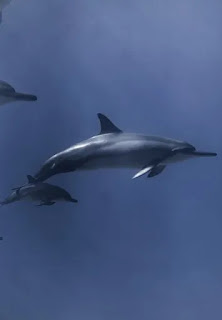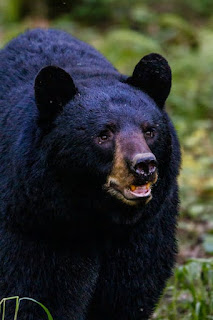Understanding the Alarming Rate of Deforestation in Pakistan and Its Environmental Consequences
Deforestation in Pakistan:-
Pakistan has highest deforestation rate in Asia and about 0.2 to
0.5% annually. At the time of independence, there was 33% of forest but now
only 2.2% are remaining and 61000.
Hectors of forest land has been converted to non-forest land. If it
continues at the present rate. Pakistan will run out of forest after 50 years.
In Punjab, 99711 acres of forests are removed and in Sindh, 27874
acres of forests are removed.
Effects on Pakistan’s biodiversity:-
Deforestation in Pakistan has had significant and detrimental
effects on the country's biodiversity. Here are some of the key impacts on
Pakistan's biodiversity:
Habitat Loss: Deforestation results in the destruction of natural habitats, which leads to the displacement and endangerment of many plant and animal species. As forests are cleared for agriculture, urbanization, and logging, species that rely on these habitats for survival are forced to adapt or face the risk of extinction.
Species Decline: Many unique and diverse species of flora and fauna call Pakistan's forests home. With the reduction in forest cover, the populations of these species have dwindled. Some species have already been classified as endangered or critically endangered due to habitat loss.
Altered Ecosystems: Forests are complex ecosystems that provide food, shelter, and breeding grounds for various species. Deforestation disrupts these intricate systems, affecting the balance of predator-prey relationships, pollination, and nutrient cycling.
Water Resources: Forests play a critical role in regulating water resources. They help maintain healthy watersheds, reduce soil erosion, and improve water quality. Deforestation can lead to increased sedimentation in rivers, which can harm aquatic life and reduce the availability of clean drinking water.
Climate Change: Forests act as carbon sinks, absorbing carbon dioxide from the atmosphere and helping to mitigate climate change. Their removal contributes to higher levels of greenhouse gases and exacerbates global warming, which in turn affects the distribution and behavior of species in Pakistan.
Increased Human-Wildlife Conflict: As forests are reduced, some wildlife species are forced to venture into human settlements in search of food and shelter. This can lead to conflicts, with potentially negative consequences for both wildlife and local communities.
Loss of Medicinal Plants: Pakistan's forests are a source of numerous medicinal plants that are used in traditional and modern medicine. Deforestation threatens the availability of these valuable resources.
Efforts to address deforestation and its impacts on biodiversity include reforestation initiatives, protected areas, and sustainable forestry practices. It is essential for Pakistan to recognize the importance of its forests in maintaining its unique biodiversity and work to protect and restore these valuable ecosystems
Millions of species list losing their habitat due to deforestation
some examples are;
Species confronting habitat loss due to deforestation in Pakistan:
 |
| Indus Dolphin |
Snow Leopard:
As agricultural practices expand and urban areas encroach upon wild spaces, elephants find their traditional migratory routes blocked or disrupted. This loss of habitat not only limits their access to essential resources like food and water but also increases the chances of human-elephant conflicts.
In Pakistan, deforestation and land-use changes contribute to the shrinking of available habitat for Asian elephants. This situation poses a serious risk to the long-term survival of the species. Conservation efforts are crucial to address these challenges and mitigate the impact of habitat loss.
Initiatives focusing on habitat preservation, land-use planning that considers wildlife corridors, and community-based conservation projects play a vital role in ensuring the coexistence of humans and elephants. Balancing the needs of local communities with the conservation of these majestic creatures is essential for a sustainable future for both. Confronts habitat loss and human-wildlife conflict.
The sea turtles, fascinating inhabitants of Pakistan's coastal waters, play a vital role in maintaining the marine ecosystem. Unfortunately, these magnificent creatures face various threats, including habitat degradation, pollution, and climate change.
As coastal development and human activities impact their nesting sites, sea turtles in Pakistan encounter challenges in their reproductive cycles. Conservation efforts are crucial to protect these nesting areas and ensure the survival of different sea turtle species, such as the Olive Ridley and Green turtles.
#SeaTurtleConservation #MarineEcosystem #PakistanWildlife #NestingHabitats #OliveRidleyTurtle #GreenTurtle #OceanProtection
Preserving these habitats, implementing sustainable fishing practices, and raising awareness about the importance of sea turtle conservation are essential steps. By engaging local communities and promoting responsible tourism, we can contribute to the safeguarding of sea turtles and their critical role in maintaining the biodiversity of Pakistan's coastal regions. Experiencing impacts on nesting sites due to coastal deforestation
The Pakistan Sand Cat, a rare and elusive feline species, inhabits the arid regions of Pakistan. This small wild cat is specially adapted to the desert environment, with its distinctively large ears and a thick coat that helps regulate body temperature.
Despite its unique characteristics, the Pakistan Sand Cat faces threats such as habitat loss and degradation due to human activities and encroachment. Conservation efforts are crucial to protecting these cats and their fragile desert ecosystems.
#PakistanSandCat #WildlifeConservation #DesertSpecies #EndangeredWildlife #BiodiversityPakistan
Preserving the natural habitats of the Pakistan Sand Cat, implementing conservation measures, and promoting community involvement are essential steps. By raising awareness about the importance of these elusive felines and their role in maintaining ecological balance, we can contribute to the conservation of the Pakistan Sand Cat and ensure a harmonious coexistence between humans and wildlife.
Losing arid habitats to deforestation and human expansion, Urgent conservation measures are imperative to safeguard these species and their habitats. 🌿🦓 #DeforestationImpact #ConservationPriority #ProtectPakistanWildlife











0 Comments